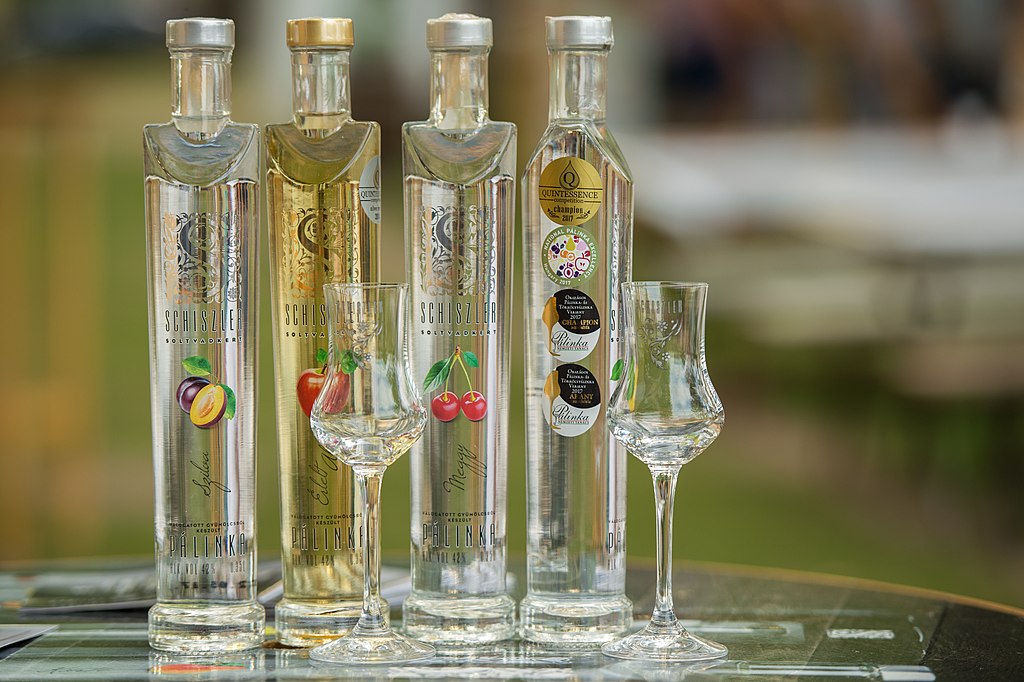The Hungarian pálinka is a fruit spirit with a rich history and fascinating characteristics. Whether you are a fan of fruit brandies or just interested in exploring different cultural beverages, pálinka offers an insight into Hungary’s soul. Here are some interesting facts you might not have known about this special alcoholic beverage.
Variety of fruits and regions
Hungarian pálinka can be made from a variety of fruits including apricots, plums, apples, pears, cherries, and quinces. Each type of fruit gives the pálinka a distinct flavour and aroma. In addition, each region in Hungary has its own style and flavour characteristics. Specific fruits may be more popular in a certain region than in others.
Source: Wikimedia Commons/T.MESE
Protected geographical indication
Pálinka enjoys a protected geographical indication (PGI) status within the European Union, which means that only fruit brandies produced in Hungary and four specific regions of Austria (Burgenland, Lower Austria, Styria, and Vienna) using traditional methods can be labelled as pálinka. This protection aims to preserve the authenticity and heritage of the drink, similar to how “Champagne” can only refer to sparkling wine from the Champagne region of France. The PGI status ensures that pálinka maintains its high quality and traditional production methods, safeguarding it from imitations.
The rich history of Hungarian pálinka
Hungarian pálinka has a storied history that stretches back to the Middle Ages. The first written documentation of pálinka, referred to as “Aqua vitae reginae Hungariae” (the water of life of the Queen of Hungary), dates back to 1332. This early reference highlights the long-standing tradition of distillation in Hungary. Historically, Hungarian pálinka was not only enjoyed for its flavour but was also valued for its perceived medicinal properties. Over the centuries, pálinka evolved from a medicinal tonic into a beloved national spirit.
A medical remedy?
Speaking of healing powers… Hungarian pálinka was often used as a home remedy for various ailments. This belief can be traced back to the early use of distilled spirits in Europe, where they were commonly referred to as “aqua vitae” or “water of life.” It is believed that pálinka is a digestive aid, a remedy for colds, an antiseptic and an effective pain relief. While modern medicine has largely replaced these traditional uses, some Hungarians still swear by the medical benefits of pálinka, particularly as a digestif.
Fun festivals and competitions
Pálinka is celebrated through various festivals and competitions across Hungary, highlighting its cultural significance and the craftsmanship behind its production. These events offer an excellent opportunity for locals and tourists to experience the rich variety of pálinka and learn more about its history and production methods. You can find the most famous pálinka festivals in Budapest and Gyula. In some cases, pálinka festivals come hand in hand with sausage festivals in Hungary, so you will not be hungry either!
These festivals are not just about tasting; they often include cultural programmes, music, dance, and food, providing a comprehensive cultural experience. Competitions held during these festivals help maintain high standards within the industry by recognising and rewarding excellence in pálinka production.
Read also:
World-known celebrities bring their wines to Hungary: try the drinks of Jon Bon Jovi, Sting, Brad Pitt!
If you would like to support the work of the Daily News Hungary staff and independent journalism,
please make a donation here
>>> Read full article>>>
Copyright for syndicated content belongs to the linked Source : DailyNewsHungary – https://dailynewshungary.com/5-fun-facts-about-the-hungarian-palinka/
